
+91 8095511877

+91 8095511877
A spinal fusion surgery joins two or more vertebrae together to make it a single unit. It helps to stabilize your spine as well as to reduce the symptoms of spine problems.
Vertebrae are small bones that make your spine or the backbone. These lie one on top of the other. There are small cushions called intervertebral discs that lie between these vertebrae.
These discs help to keep the spine flexible and stable. There is a hole in the middle of all vertebrae for the spinal cord to pass through. The spinal nerves exit through the small openings on the sides of the vertebra openings and control the movements of various muscles.
Problems with the intervertebral discs can cause it to flatten and become hard. In some, the disc will degenerate while, in others, the contents of the disc will leak out. It causes a ‘slipped disc’.
It will create a lot of friction as the vertebrae move over each other, causing pain. Slipped disc problems will also result in the compression of spinal nerves. Spinal nerve compression will result in pain, numbness, or weakness in the area it supplies.
In spinal fusion surgery, your surgeon will join the discs that cause problems. It prevents the movement of vertebrae independently. While moving, the fused vertebrae will move as a single unit. It helps to keep your spine stable.
The duration of spinal fusion surgery will be three to four hours. You will have to be in the hospital for four to six days after surgery. Complete recovery will take about four to six weeks.
You will need spinal fusion surgery for various disorders of the spine. These include
All these conditions will make your spine less stable. You will also experience pain and other symptoms when the affected vertebrae move against each other. The compression of spinal nerves will also cause disturbing symptoms like numbness, pain, etc.
With spinal fusion surgery, your surgeon will fuse the affected vertebrae. Then onwards, these vertebrae will act as a single unit while moving the spine. It helps to stabilize the spine a swell as to eliminate the symptoms.
Some conditions prevent spinal fusion surgery. They include
Your spine consists of cervical, thoracic, lumbar, and sacral vertebrae. These are present at different levels of the spine starting from the top.
Most of the spinal fusion surgeries involve only one level of the vertebrae. This type of surgery is called a single-level fusion.
Cervical and lumbar vertebrae fusion surgery is more common than others. If the operation involves more than one level, it is called a multilevel fusion surgery.
A surgeon will use two approaches to reach the spine. It will be either be a posterior approach( from the back) or an anterior approach( from the front).
You will have either open surgery or minimally invasive surgery for spinal fusion. In open surgery, the incision will be long. In contrast, in minimally invasive surgery, there will only be two or three small incisions.
Some of the common types of spinal fusion surgeries are
Before spinal fusion surgery, you will have various medical and imaging tests. X-rays, CT, and MRI scans of your spine will help the surgeon to assess the condition of your spine.
In the days before surgery, you need to have a nutritious diet. A diet rich in vitamins, minerals, and proteins will help you to recover faster after surgery. You need to drink plenty of fluids to keep yourself hydrated.
Smoking can delay recovery after surgery. So, if you smoke, you will have to stop.
If you take medicines like blood thinners, you will have to stop it for a few days before and after surgery. You may need blood transfusions after the surgery. For this, you will have to identify potential donors before the surgery.
Your recovery from surgery will take a few weeks. So, you need to make proper arrangements at home and office, if you work. It will be difficult for you to climb stairs for a few days after surgery. So, it will be better to shift your bedroom downstairs.
You will also need help with your routine activities for a few days. Enlisting someone to help during this period is ideal.
Keeping yourself physically active before surgery is very important. It will help you do physical therapy after surgery without much problem.
During a spinal fusion surgery, the surgeon will remove the damaged intervertebral discs and place bone grafts in the space. Metal plates and screws are used, which will stabilize the spine.
After some time, the bone grafts fuse the vertebrae to make it a single unit. You should note that the metal screws only stabilize the spine till the graft fuse the vertebrae together
Before surgery
You will have to be in the hospital either on the night before or the day of surgery. You should not eat or drink anything on the night before surgery.
During surgery
The surgical staff will move you to the operation room at the appointed time. Your surgeon and anesthetist will have a final check to assess your health status.
You will have general anesthesia during the surgery, which means you will sleep through the operation.
Once you are asleep, your surgeon will make an incision in your back to expose the spine. The surgeon will then retract the muscles and ligaments to expose the vertebrae for fusion.
The next step is to remove the damaged intervertebral discs. The surgeon will then place bone grafts in the space between the vertebrae. Your pelvic bone will be the source of the graft.
In some situations, the graft will be from a donor. Your surgeon will use bone cement to pack the bone grafts tightly.
The next step is to make your spine stable. The surgeon will use plates, screws, and hooks to hold the vertebrae in position. It helps to keep the bone grafts in place.
After this, the surgeon will move the ligaments and muscles of the spine to its original position.
The final step is to close the incisions with sutures or staples. Before suturing, your surgeon will place drains in the operation site. These drains are there to remove any fluids that will accumulate in the area.
After surgery
Once the surgery is over, the staff will move you to the observation room. It will take an hour or so for you to slowly come out of your anesthetic sleep. While waking up, you will find you are lying on your side. You will keep doing so for a few more days. There will be a tight bandage on your back.
Once you are awake, the staff will move you to the hospital room. You will feel a bit of pain once the anesthesia goes off. Painkillers will help you to control it.
You will be in the hospital for four to five days after surgery. Once your surgeon feels that your recovery is on schedule, you will go back home.
Spinal fusion is a safe surgery with a low risk of complications. Some risks and complications are
In a few, the surgery will fail to provide relief from the symptoms. The failure of the bone graft is another possible complication. Pseudarthrosis, a condition where the vertebrae fail to fuse is another complication. Smoking is a cause of pseudarthrosis.
You will have a brace in your back to support your spine soon after surgery. It is to protect the fusion site as well as to make you feel comfortable.
You will have to take a few steps now and then. It helps to improve your circulation and prevent blood clots in the legs. Wearing compressive stockings is also important to prevent blood clots.
You will be able to sit by the side of your bed without difficulty. There will be no restrictions on food. It is important to have a nutritious diet as well as to drink plenty of fluids.
For the first few weeks, you should not twist your spine. You should not bend down or lift weights during this period. Keep climbing stairs to the minimum.
Physical therapy will start in the third week. You will have to do the prescribed exercises at regular intervals.
You will be back to normal activities from the eighth week onwards. Complete recovery will take a few more weeks.


This article has been reviewed for medical correctness and relevance by
Dr Srinivasa N
Dr. Srinivasa. N is an an accomplished orthopaedic spine surgeon offering highest standard of care to patients affected with spinal disorders. He is currently working as a consultant spine surgeon at Tejasvini hospital,Mangalore, Karnataka. His areas of expertise include endoscopic spine surgeries, spinal decompression and fusion surgeries, surgeries for scoliosis andkyphosis, vertebroplasty
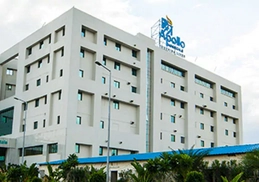
Apollo Chennai

Apollo Health City
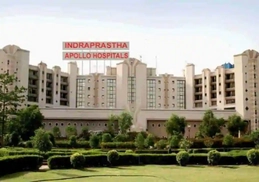
Apollo Indraprastha
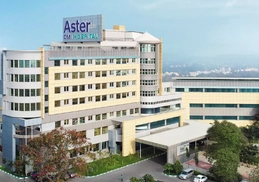
Aster CMI
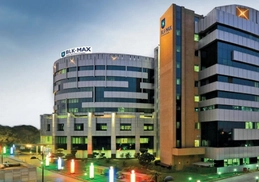
BLK Hospital
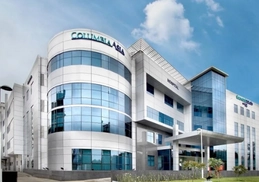
Columbia Asia
Frequently Asked Questions
Can you live a normal life after spinal fusion?
How much does spine surgery cost in India?
What are the risks of spinal fusion surgery?